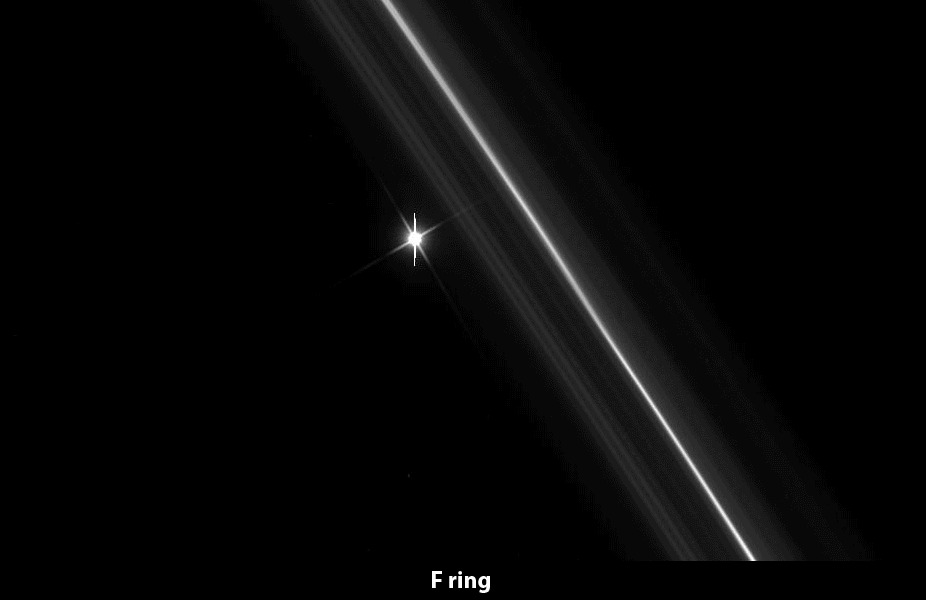Emily Lakdawalla • Jan 04, 2008
Antares tours Saturn's rings
OK, here's yet another post for the "just plain cool" department. I've (to my shame) fallen out of the habit of checking the Cassini raw images page every day, but someone pointed out to me that today there are some nice new images of Dione. Those are cool to be sure, but my attention was immediately grabbed away from Dione to many views of Saturn's rings with a bright, four-pointed star of light at their center. Here's an animation of those images, which present a tour of the outer part of Saturn's main ring system. I apologize for the large size of the animated GIF image below -- it's almost 600k -- but it just wasn't the same at lower resolution.

For help in navigating this image, you might want to compare each frame to this beautiful panorama of the entire ring system:

What's going on in the animation? Well, to anyone familiar with how we study planetary rings, it will be clear that we're looking at a stellar occultation. The best way to figure out the particle size, density, distribution, color, and other properties of planetary rings is to watch a point source of light pass behind them, and see how that point source of light's color and brightess are affected by their passage through the rings to your camera. It's sort of like driving in a car past a tree-lined street--the sun will shine in your windows where there are gaps in the trees, but will be blocked if trees and branches crowd the street.
The brighter the source of light, the better, especially if you're trying to study Saturn's rings, which (in the case of the B ring at least) are exceptionally dense; at the end of the animation, in the last two frames, that bright star sharply dims, barely able to pierce the outer edge of the B ring. (I should admit here that I cheated a bit when I put the animation together -- it runs backwards in time, because I thought it was clearer for it to start at the edge of the ring system, at the F ring, rather than take up in the middle of it and go out to the edge.) After a little bit of digging around, I figured out that the star we're looking at is one of the brightest in the sky, Antares, the heart of the Scorpion. It's rare for the orbital dance of Cassini and Saturn and its rings to bring such a bright star into position for an occultation measurement; I'm sure this must have been quite exciting for the rings folks.
The images from which this animation was made are not the "real" data on the occultation -- they're just a few snapshots to give pictorial context, sixteen pictures taken over the few hours that this occultation would have been unfolding. The "real" data will presumably come from other instruments, particularly the spectrometers VIMS and UVIS. Those instruments have lower spatial resolution than the cameras (which means that they can't show us the amazing and mesmerizing detail of ringlets upon ringlets in the rings that the cameras can), but they probably took hundreds or maybe even thousands of measurements of the brightness and color of Antares, seen shining brightly through the rings, in wavelengths spanning from the ultraviolet to the near-infrared, as it winked and twinkled behind Saturn's rings as Cassini flew downward toward its ring plane crossing late last night.
This all unfolded yesterday, as Cassini approached the closest point to Saturn on revolution number 55 today; tomorrow it'll accomplish its 40th (four-zero! Forty!) flyby of Titan. As our attention waxes and wanes, Cassini never falters; it keeps on orbiting Saturn, and keeps on returning amazing pictures. Great stuff.
Support our core enterprises
Your support powers our mission to explore worlds, find life, and defend Earth. You make all the difference when you make a gift. Give today!
Donate

 Explore Worlds
Explore Worlds Find Life
Find Life Defend Earth
Defend Earth

